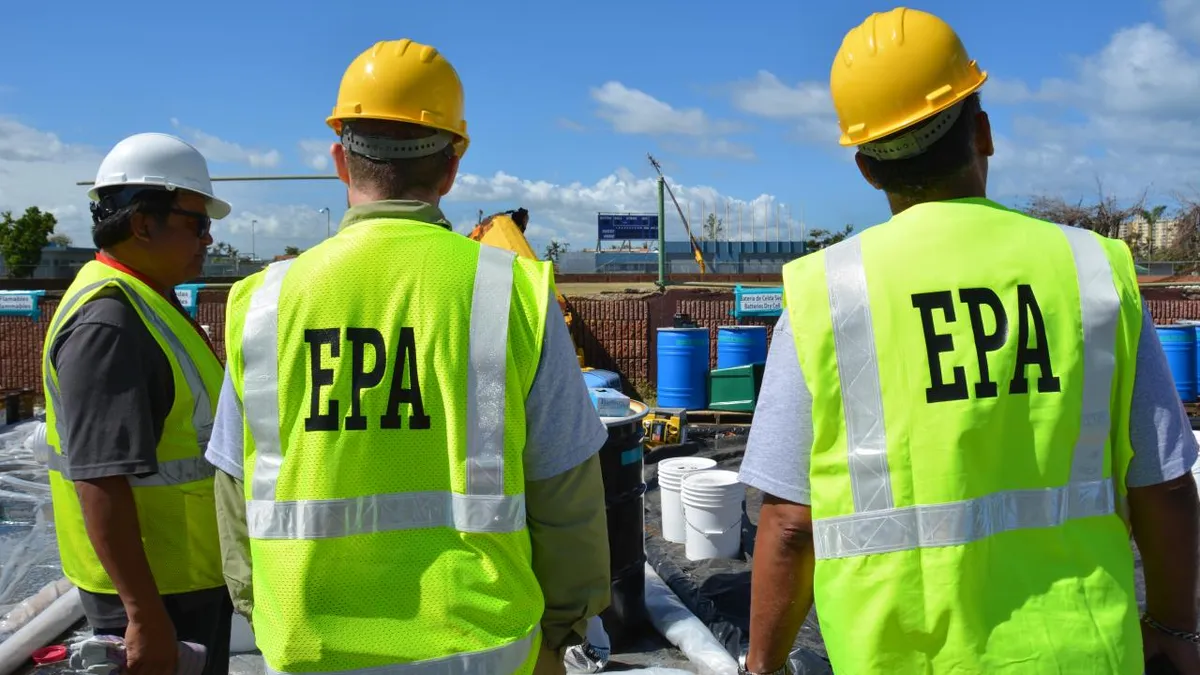UPDATE April 5, 2018: The U.S. Environmental Protection Agency (EPA) announced Wednesday that it would suspend curbside collection of household hazardous waste (HHW) in Puerto Rico by April 13. EPA said it had so far collected "nearly one quarter of a million items" from around the island since Hurricane Maria.
"The EPA's work is transitioning from immediate response to long term recovery and our household hazardous waste program throughout Puerto Rico has helped many people properly dispose of potentially hazardous items they may have stored in their homes," EPA Regional Administrator Pete Lopez said in a statement.
About 248,100 drums, propane tanks, cylinders and other "orphan" items have been collected and diverted from landfills since the hurricane, according to the agency.
EPA says the volume of material being collected has "decreased dramatically," so the service will not be needed much longer. The agency is arranging for one-day collection events in some regions to continue through April 22.
Dive Brief:
- More than three weeks after Hurricane Maria struck Puerto Rico, large piles of waste and debris still remain throughout many parts of the island and concerns are rising about the potential effects on public health, as reported by the Miami Herald.
- In towns such as Toa Baja, less than 20 miles from the capital of San Juan, piles of household debris and animal carcasses have accumulated that could potentially start to harbor vermin or disease-carrying mosquitoes. Local residents fear this could worsen if rain soaks the piles and creates additional standing water in the area.
- According to updates on the Puerto Rican government's website, Toa Baja requested assistance for refuse collection earlier this month. As of Oct. 6, the government reported that some form of collection had resumed in at least 36 of the island's 78 municipalities.
Dive Insight:
Waste had already been a challenge for Puerto Rico before the storm. The Environmental Protection Agency has forced the closure of dozens of landfills in recent decades due to poor environmental conditions, with plans to close more in the future. This has put additional pressure on the ones that remain and illegal dumping had become prevalent in some areas long before Maria arrived. With the Puerto Rican government deeply in debt, there were few clear solutions for what to do next.
Now, the Puerto Rico Environmental Quality Board's main waste-related goal is to have disposal plans in place for all 78 municipalities by the beginning of November if they request one. So far, multiple municipalities have requested assistance with biomedical waste collection. Exposure to materials such as asbestos in construction debris also remains an issue that the the government is monitoring.
Details about the full status of public or private waste collection operations remain scarce on the island, with power still out for more than 86% of its residents and phone service limited. The island has already seen some assistance from the mainland waste industry in the form of supplies and personnel in recent weeks. Though with 28% of residents still lacking access to clean water, and concerns that multiple fatalities caused by leptospirosis may be linked to those conditions, the need for a return to basic sanitary conditions is only becoming more dire.














